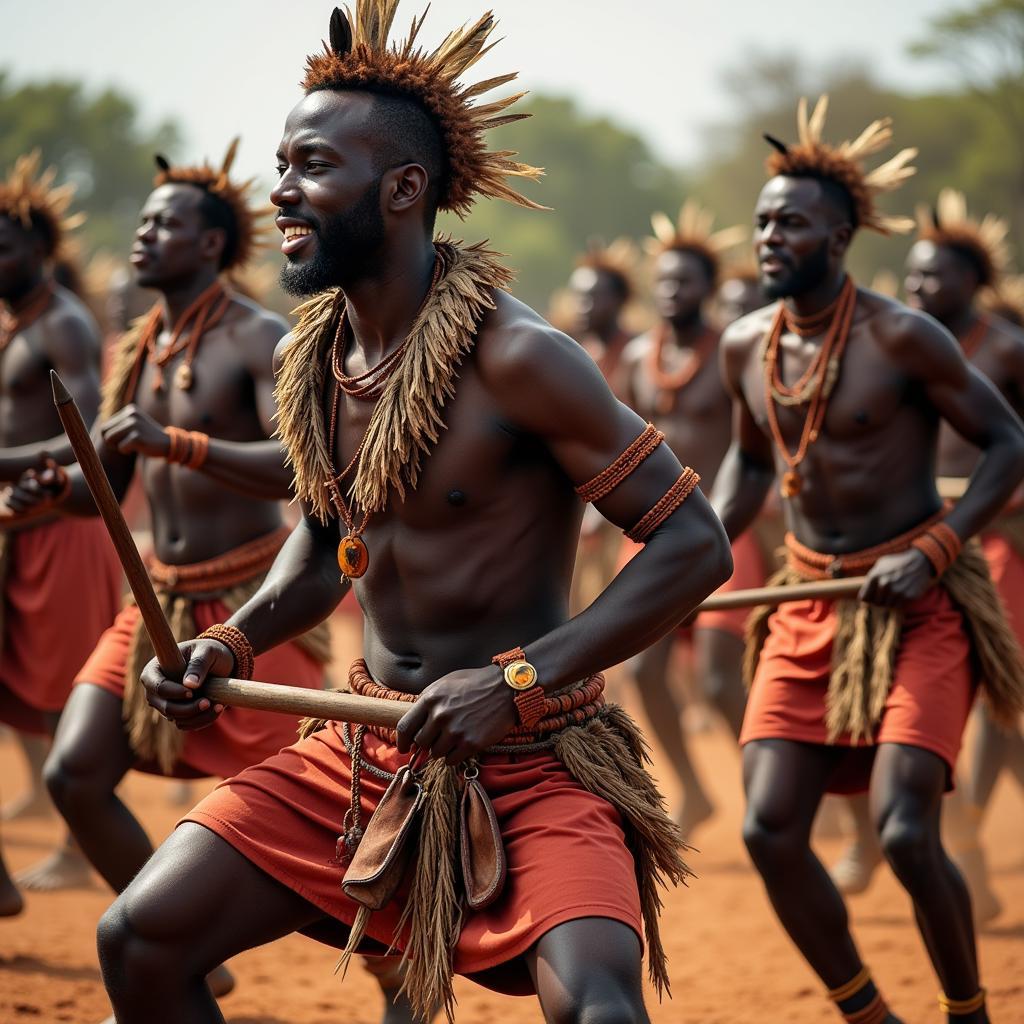Exploring the Diverse World of African Beauty Practices
From ancient rituals to modern trends, African Beauty Practices are as diverse as the continent itself. Rooted in tradition and rich in natural ingredients, these practices reflect a deep connection to heritage and a celebration of natural beauty. Let’s delve into the fascinating world of African beauty, uncovering its secrets and understanding its significance.
The Significance of Beauty in African Culture
Across Africa, beauty holds a significant place in society, reflecting cultural identity, social standing, and personal values. It’s not merely about aesthetics; it’s an integral part of life, woven into daily routines, ceremonies, and celebrations.
For instance, in many communities, elaborate hairstyles aren’t just fashionable; they communicate marital status, age, or social hierarchy. Similarly, scarification, while waning in some regions, can be a powerful symbol of courage, lineage, and cultural belonging.
A Journey Through Diverse Beauty Practices
The vastness of Africa is mirrored in the wide array of beauty practices found across its nations.
Embracing Natural Ingredients
One of the unifying threads is the reliance on natural ingredients. From the shea butter of West Africa, renowned for its moisturizing properties, to the argan oil of Morocco, celebrated for its anti-aging benefits, Africa is a treasure trove of botanical wonders.
Black soap, made from the ash of locally harvested plants, is a staple in many households, known for its gentle cleansing and exfoliating properties. Clay masks, using different types of clay depending on the region, are used to purify and revitalize the skin.
“In my village, we believe that true beauty comes from the earth,” says Abena, a traditional healer from Ghana. “We use what nature provides to care for our skin and hair, respecting the traditions passed down through generations.”
The Art of Hair Braiding
Hair braiding is an intricate art form in many African cultures. Far beyond a simple hairstyle, it’s a form of expression, social bonding, and cultural transmission.
Intricate cornrows, elegant twists, and elaborate updos are created with meticulous care, often taking hours to complete. These styles are not just aesthetically pleasing; they protect the hair, promote healthy growth, and serve as a canvas for showcasing creativity and personal style.
Adorning the Body with Henna and Natural Pigments
From intricate henna designs on hands and feet to the use of natural pigments for body art, African cultures have long used adornment as a form of self-expression and cultural storytelling.
Henna, a plant-based dye, creates temporary tattoos that hold cultural significance, often used for weddings, celebrations, and rites of passage. Red ochre, found in various parts of Africa, is used as a natural sunscreen, body paint, and in traditional ceremonies.
These practices showcase the artistic ingenuity and cultural richness embedded in African beauty traditions.
The Evolution of African Beauty Practices
While deeply rooted in tradition, African beauty practices are not static. They are constantly evolving, adapting to modern influences and changing lifestyles.
The rise of African beauty entrepreneurs has led to a global interest in traditional ingredients and practices. Natural hair movements are reclaiming and celebrating the beauty of Afro-textured hair. Modern interpretations of traditional hairstyles and adornments are finding their place in contemporary fashion and art.
Conclusion
Exploring African beauty practices is a journey into the heart of diverse cultures, ancient traditions, and a deep reverence for natural beauty. It’s a celebration of individuality, heritage, and the enduring power of ancestral knowledge. From the bustling markets where ingredients are sourced to the intimate settings where beauty rituals are shared, African beauty practices offer a glimpse into the soul of a continent.

